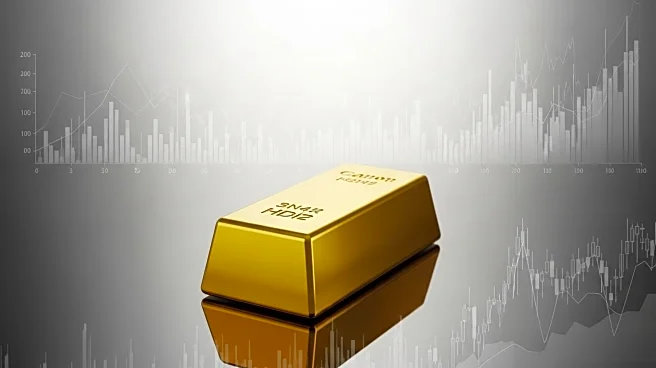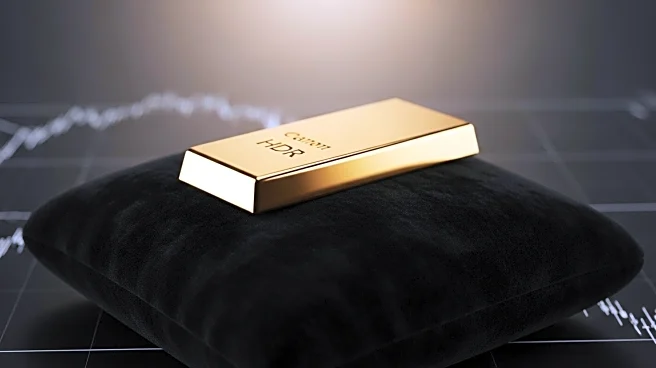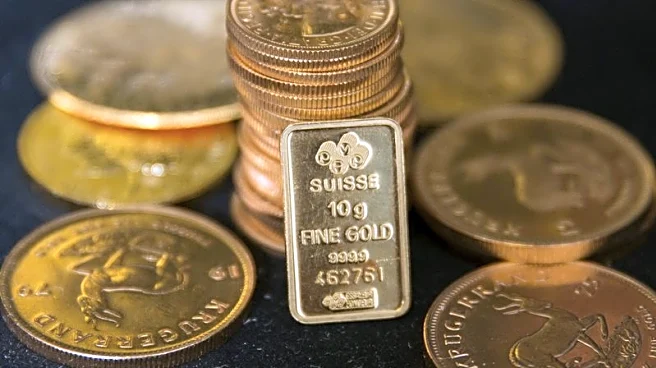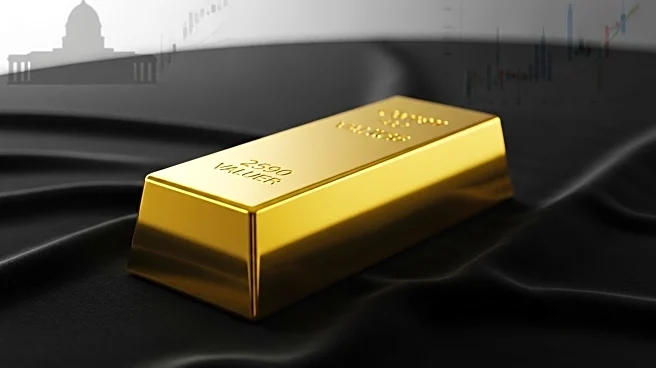What's Happening?
Gold futures have reached a historic high, surpassing $4,000 per troy ounce for the first time. Goldman Sachs has responded by increasing its 2026 price target for gold to $4,900, up from $4,300. This adjustment reflects a projected upside of 22.5% from current levels, driven by strong ETF flows and demand from central banks. Goldman Sachs suggests that private sector diversification into the gold market could further boost ETF holdings, potentially exceeding their current estimates. However, Bank of America has expressed caution, noting that gold may face 'exhaustion' at the $4,000 level, as historical trends indicate potential declines following prolonged periods of price increases.
Why It's Important?
The surge in gold prices and Goldman Sachs' optimistic forecast could have significant implications for investors and the broader financial markets. As gold is often seen as a safe-haven asset, increased demand could signal investor concerns about economic stability or inflation. The potential for further price increases may attract more investment into gold ETFs, impacting market dynamics. Conversely, Bank of America's cautionary stance highlights the risks of overvaluation and potential market corrections. These developments could influence investment strategies and portfolio allocations, particularly for those seeking to hedge against economic uncertainties.
What's Next?
Investors and market analysts will closely monitor gold's performance in the coming weeks, especially given Bank of America's warning of potential 'exhaustion.' The interplay between central bank demand and private sector investment will be crucial in determining future price movements. Additionally, any shifts in global economic conditions or monetary policies could further impact gold's trajectory. Stakeholders may need to reassess their positions and strategies in response to evolving market conditions.
Beyond the Headlines
The current situation with gold prices may also reflect broader economic sentiments, such as concerns over inflation or geopolitical tensions. As gold is traditionally viewed as a hedge against economic instability, its rising value could indicate underlying anxieties within the market. This trend may prompt discussions on the role of gold in modern investment portfolios and its relevance in a rapidly changing economic landscape.











